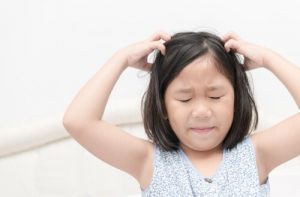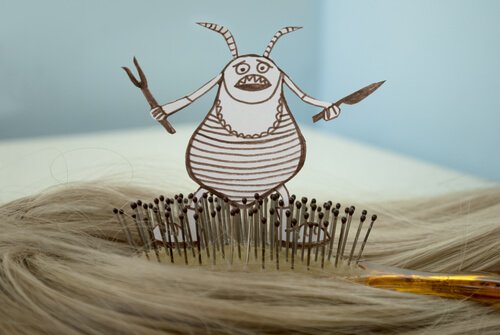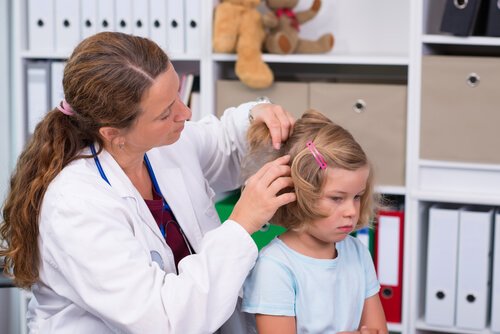How to Prevent Lice at School

The fact that children can catch lice at school is a cause for concern for all parents. Frequent and close contact among students carries the risk of this kind of infestation. However, there are measures we can take to prevent lice, as well as stop them from breeding and spreading.
A close look at lice
Head lice are insects. Specifically, they’re tiny parasites about 1/16-inch (2 mm) long, brown and six legged. Lice can live for up to 35 days in their different stages.
They feed on human blood, and often colonize our scalp. There, they hold on tight to our hair and lay eggs, known as nits. Their wounds sting, because of the fluids they pass onto humans when they bite.
How can we catch them? Mostly, from person to person, through direct contact. They can also be transmitted through shared objects, on which they travel to another host.
Children: their favorite hosts
Close to 20% of children suffer from pediculosis, which is another name for head lice infestation. They spread easily thanks to the closeness among children while they study, play, live together, or when they exchange personal belongings or clothes. Though it is more frequent in children, adults aren’t free from getting infected.

Pediculosis symptoms
Pediculosis can sometimes be asymptomatic. The insects and their eggs can also go unnoticed. The most visible signs are:
- Head scratching.
- Pink lesions on the scalp, caused by all the scratching.
- Presence of small balls at different lengths of the hair (these are the eggs or nits)
- Finding insects on clothing items near the head.
If we notice any of these symptoms, in order to confirm the diagnosis we suggest taking the following measures:
- Checking the hair strand by strand, looking for parasites or nits.
- Carefully combing the hair with a special comb over a white paper, in order to see the lice better.
If diagnosis is confirmed, we must inform authorities at school, so they can put preventive measures in place.
Can we prevent lice at school?
Preventing lice from spreading at school is no easy task. However, some measures and homemade remedies can minimize the impact, and even prevent lice altogether:
- Don’t share hair accessories or clothes among children: combs, brushes, hats, accessories, etc.
- During the most problematic seasons, keep their hair short or tied back.
- At school, keep parents informed in case of infestation, so they can act preventively.
- Inform children about the problem and ways to prevent lice.
What if my child gets lice at school?
Even with all the precautions we explained, there is always some risk of infestation. If our child already has lice, our actions must focus on stopping the parasites from going into their reproductive stage:
- See a pediatrician or dermatologist.
- Check other family members for lice.
- Use special head lice shampoos. Once they are dead, remove all insects and nits by hand.
- Wash the clothes and objects used during the outbreak in hot water (over 50ºC).
- Vacuum-clean the house, as thoroughly as possible, including furniture and all flat surfaces.
These measures, when properly followed, minimize the spread of lice at school and at home.

Myths about pediculosis
Some unfounded beliefs must be forgotten if we really want to solve the problem:
- Head lice infestation has nothing to do with bad hygiene.
- Homemade remedies to eliminate lice haven’t been proven effective. Furthermore, they waste our time, which the parasites will use to breed, colonize and spread.
- Lice can’t lay latent. Actually, they can’t survive without feeding longer than 2 days, after which they die.
- These parasites don’t carry diseases. They don’t pass them from animals to people or vice-versa.
- We shouldn’t use any chemicals as a precaution without previously confirming the diagnosis. It is unnecessary and can build up resistance to future treatments.
Lastly, if a child at school has lice, he shouldn’t be shamed by disclosing the situation. Instead, he should receive support from parents and teachers.
This text is provided for informational purposes only and does not replace consultation with a professional. If in doubt, consult your specialist.



